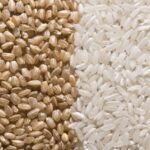Lunar Dust Could Be Transformed into Paved Roads and Landing Pads on the Moon Using Concentrated Sunlight.
Lunar dust may one day be used to create roads and landing pads on the moon through an innovative process involving concentrated sunlight. Experiments conducted on Earth using lasers to blast simulated lunar soil have shown promise in the development of this groundbreaking lunar construction technique.
Lunar dust, primarily composed of lunar volcanic rock, has been transformed into a fine powder by cosmic impacts and radiation over millions of years. The moon’s surface appears white due to reflected sunlight, but its soil is predominantly dark gray. Unlike Earth, which experiences erosion from wind and water, the moon lacks these factors, resulting in sharp-edged particles within moon dust.
The sticky and abrasive nature of lunar dust poses potential hazards for space exploration, as it can damage lunar landers, spacesuits, and even human lungs if inhaled. To mitigate these issues and enable lunar rovers to traverse the moon’s surface safely, researchers are exploring the construction of paved roads.
One approach to lunar road construction involves using lunar resources, as transporting building materials from Earth is costly. In a recent study, researchers conducted experiments using a fine-grained material known as EAC-1A, developed by the European Space Agency as a lunar soil substitute. Their goal was to investigate whether concentrated sunlight could melt lunar dust into solid rock slabs.
The scientists conducted experiments with laser beams of varying power and size, some of which reached up to 12 kilowatts in power and 4 inches (10 centimeters) in width. The results demonstrated that triangular, hollow-centered tiles measuring approximately 9.8 inches (25 cm) in width and up to 1 inch (2.5 millimeters) in thickness could be produced. These tiles could be interlocked to create solid surfaces across extensive areas of lunar soil for use in roads and landing pads.
While prior research suggested that intense sunlight or laser beams could fuse lunar soil into dense structures, these new experiments marked significant progress, producing larger blocks using more powerful and substantial light beams.
To implement this technology on the moon, researchers would require a lens approximately 5.7 feet (1.74 meters) in diameter to focus sunlight into a powerful beam. Future experiments will examine how well these tiles withstand rocket thrust to determine their suitability for landing pads. Researchers also plan to conduct tests under simulated lunar conditions, taking into account the absence of an atmosphere and the reduced gravity experienced on lunar flights. Demonstrating the feasibility of this technology is essential before it can be applied on the moon.
Disclaimer: The views, suggestions, and opinions expressed here are the sole responsibility of the experts. No Echo Gazette journalist was involved in the writing and production of this article.



